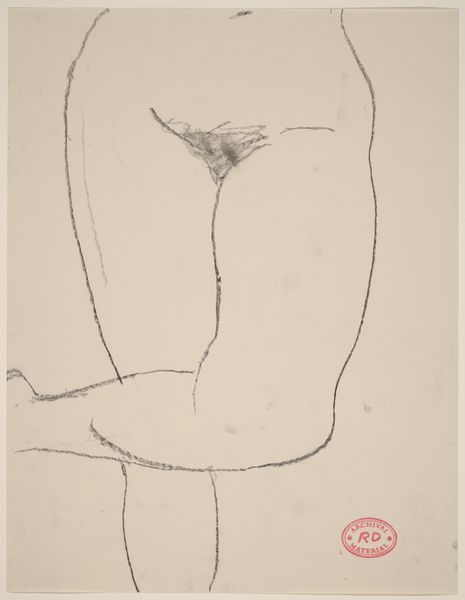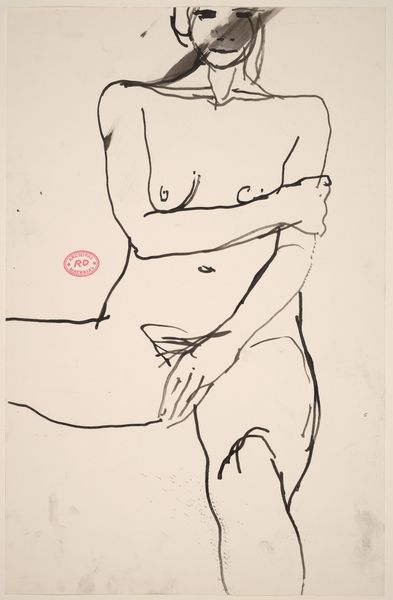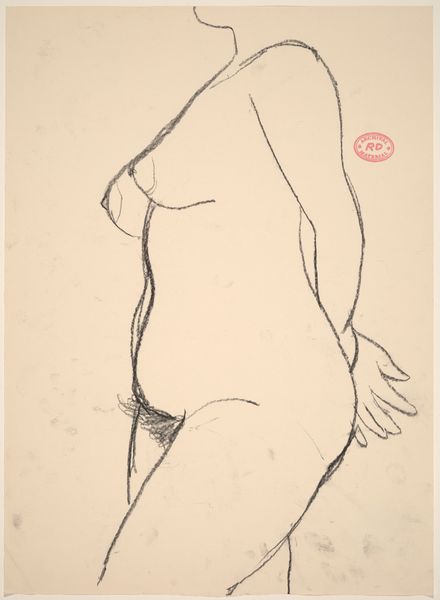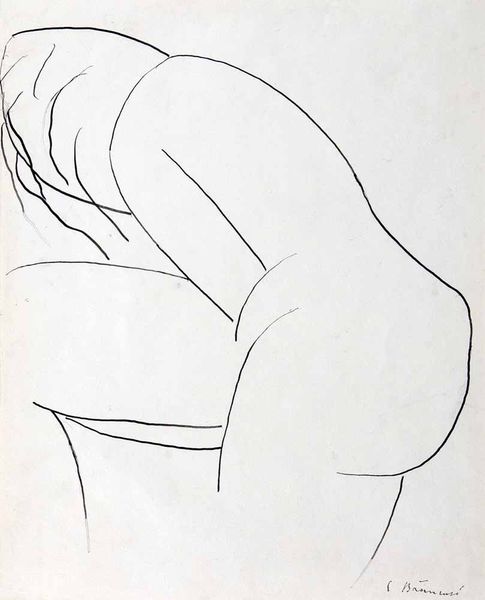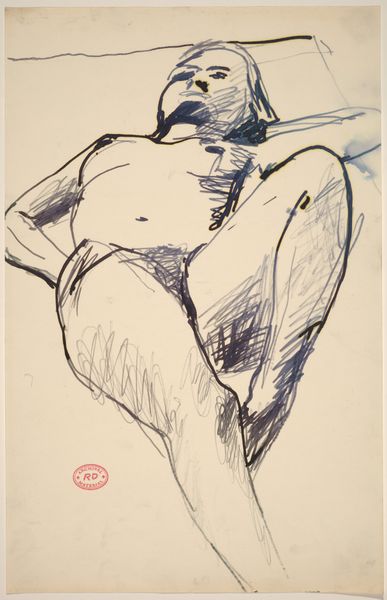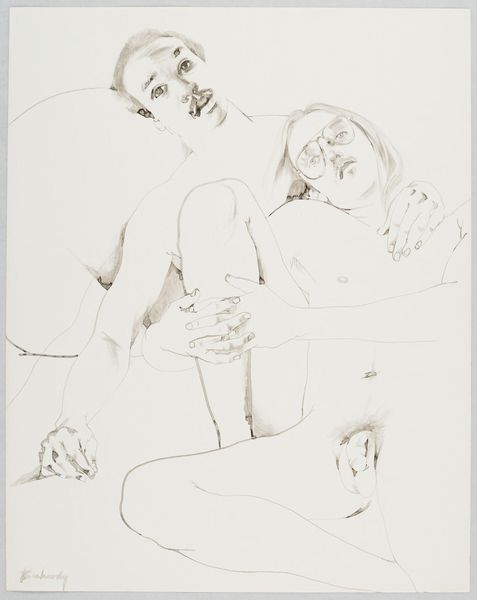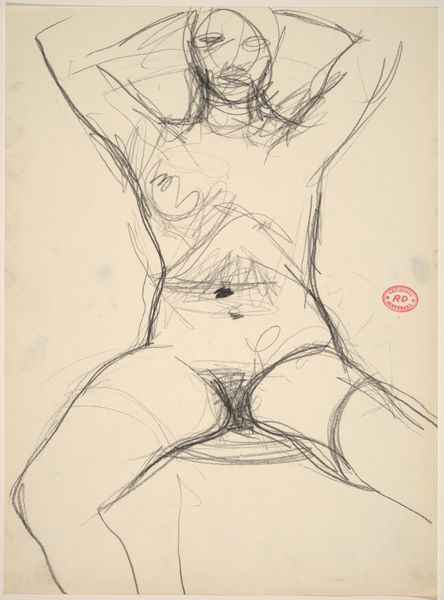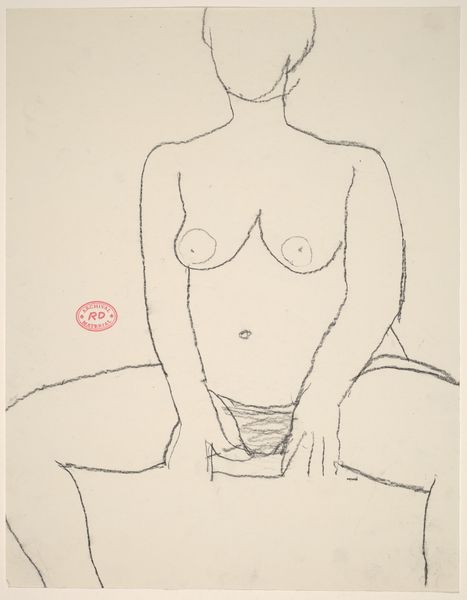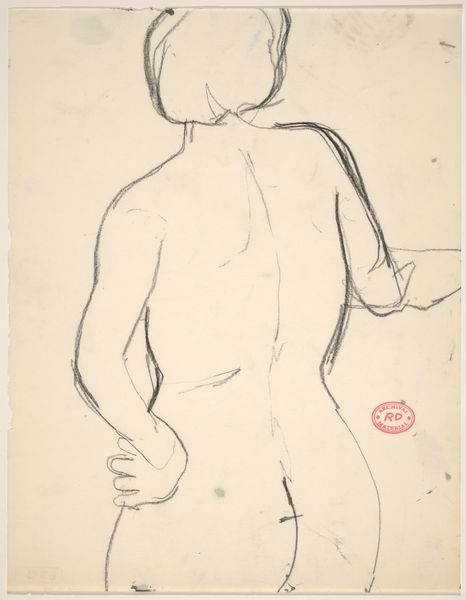
Dimensions: image: 9.5 × 7.3 cm (3 3/4 × 2 7/8 in.) sheet: 10.8 × 8.6 cm (4 1/4 × 3 3/8 in.)
Copyright: National Gallery of Art: CC0 1.0
Curator: Here we have Andy Warhol's "Nude Model (Male)", a photograph taken in 1977. Editor: It’s a stark, almost clinical study, isn't it? The framing feels very deliberate, cropped to focus on this expanse of skin and its topography, like a landscape rendered in flesh. Curator: Absolutely. The photograph is a testament to Warhol's exploration of form through seriality. This image presents a deconstruction of classical nude portraiture. By isolating a fragment of the body, he directs our attention to its purely visual elements. Note the interplay of light and shadow. Editor: The muted color palette reinforces that feeling. The subdued tonality strips away any romanticism often associated with nude studies, revealing, instead, a frank corporeality, an almost brutal honesty of the human form as simply mass. I almost feel there's an invitation here to reflect on the ideals of masculinity and representation of the body. Curator: Precisely. The anonymity of the model is quite interesting, too. Warhol often used everyday people in his portraits, blurring the line between celebrity and anonymity. It brings into play notions of celebrity worship and the human condition—a reflection of a mass-produced world, drained of conventional artistic allure. Editor: True, the lack of discernible identity lets it work as an everyman archetype in a way, even if specific in form, a comment on the male image as commercial construct, rather than vulnerable reality. It pushes a vision of vulnerability, absent any overt sexual context, that reflects broader existential themes. Curator: I agree. We are invited to reassess preconceived ideas concerning beauty, the nude form, celebrity culture and commercialized humanity through stark structural elements. The work’s radical formal statement invites deeper thought concerning the contemporary artistic statement itself. Editor: Yes. After considering his vision, I sense a reflection, beyond any aesthetic quality, a vision of vulnerability and existential pondering that leaves you wanting to know more about our social selves.
Comments
No comments
Be the first to comment and join the conversation on the ultimate creative platform.
